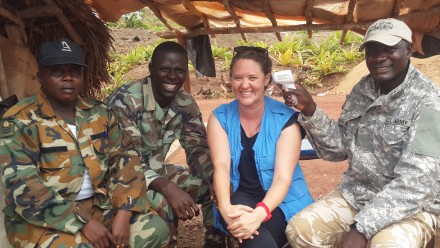Measuring what matters in mental health
Share
In 2023 Treasury released Australia’s first ever national wellbeing framework: Measuring What Matters. It uses 50 indicators across five themes—healthy, secure, sustainable, cohesive, prosperous—to define wellbeing.
While this is a much-needed policy, researchers are concerned about some aspects of its approach.
“I’ll give the Government points for having a wellbeing framework – it’s a good start, but there are some serious problems with it,” says lived experience mental health researcher, Professor Michelle Banfield.
According to Banfield the policy is rather one-dimensional in its approach to mental health. The proportion of adults who experienced high or very high levels of psychological distress is used as the sole proxy to assess the population’s mental health status. And this metric relies on the Kessler Psychological Distress Scale whose outcome is a simple number that defines psychological distress.
Banfield says this was likely chosen because it’s an easy metric to measure and report on – the Australian Bureau of Statistics already has this information. However, this doesn’t paint a comprehensive picture of mental health.
“There is currently no mention whatsoever of the importance of continuity of care, or the complexity of navigating the mental health system,” Banfield points out.
Banfield is advocating instead for measures of mental health that are meaningful to people and holistic in approach. To do this she says we need to talk to people in our community about what matters, including those with mental health conditions and their carers, researchers, policy makers, and Government.
“We need to ask these people what holistic health means to them? And what do we need to do in order to change our system to be a holistic approach to mental health?”
To find out, Banfield and her colleagues from the ALIVE National Centre for Mental Health Research Translation group held a two-day symposium with a focus on holistic systems for enduring and supported mental health. Over 130 people attended this free online and in-person event.
“We framed Measuring What (really) Matters as a call to action for this year's symposium. We asked attendees to think beyond the national datasets,” says Banfield.
To define what matters to people, symposium attendees were involved in several immersive activities designed to get attendees to listen and think deeply about the different aspects of mental health. These included connecting with the environment through photography and craft, deep listening with Aboriginal and Torres Strait Islander peoples, and shared weaving activities to promote connection with others. They then proposed alternative attributes of mental health and wellbeing, for example valuing the feelings of hope, friendship, belonging, and safety.
These conversations and insights lay the groundwork for creating meaningful dialogue within all parts of Government and support services.
“Measuring What Matters actually states that it should be an iterative and living document. So we hope to engage with Government and help co-create something more meaningful. I do think it’s very important that Government be involved for this to progress,” says Banfield.
Banfield says we need to think carefully about what is counted in a national wellbeing framework. Afterall, we know that what gets counted, gets discussed. And these discussions and associated policies impact the lives of all Australians.
Find out more about Casting the Net for What Matters and For Whom? A Call to Action to [re]form mental health and wellbeing, and Actions to the Call – a new bold, co-created framework to improve mental health and wellbeing. Help by adopting these actions yourself and aid the shift to relational systems, safe policy, and holistic wellbeing that will move us away from a past focus on deficits to a future that spreads hope.










